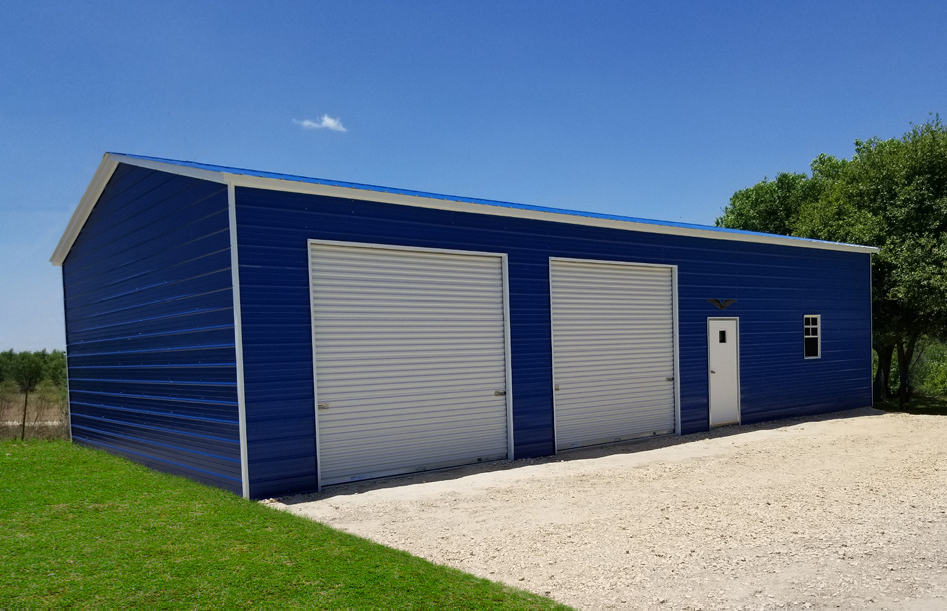Even though metal structures are quick, cheap, and easy to build, they also last for a long time. If you use a metal structure for more than just common storage, you might wonder how much energy a metal building might use.
The energy efficiency of a metal building mostly depends on additional features in your buildings, such as how well the building is insulated. The heating and cooling for a well-insulated metal building will be much lower than one that is not well insulated. High-efficiency lighting can also help the building be more energy efficient.
We’ll explain several ways to keep your metal building energy-efficient and operating costs low.
How to Keep Heating and Cooling Bills Down In Metal Buildings
Metal is a very good conductor of heat, which means that whatever temperature it is outside, the metal will easily conduct that temperature inside the building. If it’s very hot outside, your metal building will be very hot inside, and vice versa in the cold.
To keep your building better protected against the elements, you must install insulation in the walls and in the ceiling. The better the insulation, the less you would need to heat or cool your building. When shopping for insulation, look at the rated R-value. The higher the R-value, the more effective the insulation is. MidwestSteel.com recommends batt (or blanket), rigid, or spray foam insulation.
There are several types of insulation to consider. Batt is common insulation. Typically, batt insulation is laid in between studs. Batt insulation has a lower R-value per inch of thickness than other insulation. For example, batt insulation may need 3-4 inches of depth to reach an R19 rating, whereas rigid insulation may only need 1” for the same value. Spray foam insulation is much easier to install and will easily adhere to the metal sheathing.
The best way to insulate your building is to install the insulation between studs of the walls or roof and cover the insulation with an interior finish, such as gyp board or sheetrock. Power outlets, panel bards, and conduits can also be recessed into the sheetrock. The interior finish can also be painted to give the building a nice look.
The color of your exterior walls and roof can also impact your heating and cooling. Gensteel.com says in warmer climates, a lighter color roof can reflect heat from absorbing into your building, while darker colors can help absorb heat in cooler climates.
If you plan to air-condition or heat your building, make sure you also install a high-efficiency unit that is sized appropriately for the size of your building. If you invest in good insulation, also make sure that the efficiency rating of the unit is good. Look for a high COP (Coefficiency of performance) or EER (energy efficiency ratio) when selecting your unit.
Reducing Energy Usage with Lighting and Power
Aside from heating and cooling, the next largest use of energy in your metal building will include lighting and power. In tall workshops or other high bay structures, large lighting fixtures are installed up high. However, many of these high bay or shop fixtures can have poor energy performance.
Modern, LED fixtures have high outputs and good color quality. They also are very efficient, which means they use less power to output the same amount of light. The fixtures also produce less heat, which is good in the summer months. In the winter, the heater will have to offset the lack of heat from the lighting.
You can also install controlled receptacles in the space. Many appliances and tools have ghost or phantom loads, which draw power even when they’re not in use. Controlled receptacles will shut off these ghost loads when no one is around, making sure they aren’t drawing unnecessary power.
Use Occupancy Sensors to Control HVAC and Lighting
An easy way to help reduce energy costs is to make sure that your HVAC and lighting aren’t running when you’re not using your metal building.
Occupancy and vacancy sensors can help sense when the building is in use. Occupancy sensors detect when someone walks in, turning on the lights or the HVAC. Vacancy sensors detect when someone has left the space, turning the HVAC or lighting off. By turning off the power and lighting when not in use, you can save on electricity.
Even without fancy controls, setting back the thermostat can help. Power strips can make turning off all the appliances and tools easy, as well. Taking a quick look around the building before you leave can make sure that nothing was accidentally left on.
Metal buildings themselves may not be energy efficient. However, with additional features, such as wall insulation, efficient HVAC equipment, and efficient power and lighting features, you can have a building with low operational costs.
Topping Your Building With A Cool Roof
Steel structures are known for their energy efficiency. This is one of the reasons they’ve become a popular code-approved alternative for building structurally sound structures in a variety of settings, from agricultural and industrial to commercial and residential. By using a lighter color like white or galvalume your roof is much cooler. Hence, saving you energy.



Recent Comments